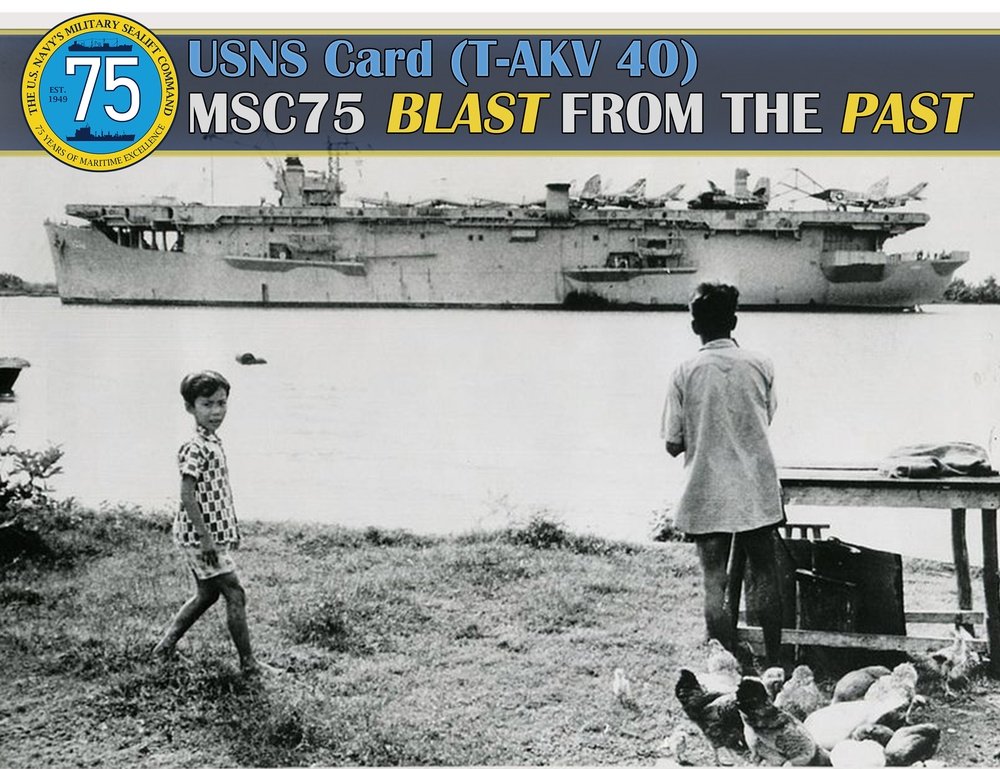This year marks the 75th Anniversary of Military Sealift Command. In our MSC75 Blast from the Past series, we honor MSC’s significant impact on the maritime environment and 75 years of maritime excellence by looking back at some of the vessels that laid the framework for the MSC fleet as we know it today.
On May 2, 1964, USNS Card (T-AKV 40) became the first major U.S. vessel sunk by enemy action during the Vietnam War.
USS Card (ACV-11) was an American Bogue-class escort carrier commissioned in 1942. It was reclassified as a Cargo-Ship and Aircraft Ferry, re-designated as (T-AKV 40) and activated for the Military Sea Transportation Service (MSTS), later known as Military Sealift Command, in 1959.
Crewed by a civilian crew, Card had made several ships to Saigon, Vietnam, carrying helicopters, planes and vehicles. It had just unloaded a cargo of helicopters and fighter-bombers from Manila, Philippines, and was preparing to return to the United States when Viet Cong frogmen planted an explosive charge below the waterline near the engine room that blew a hole in the hull of the 9,800-ton ship killing five crewmen.
Due to rapid response from the crew and authorities, flooding in the engine compartment was stopped and stabilized quickly, leaving Card settled 48 feet below the water level. Salvage operations began immediately and on May 19, only a couple of weeks after the attack, Card was raised nearly 50 feet and towed to Subic Bay in the Philippines and then Yokosuka, Japan, to undergo repairs.
Card would return to service Dec. 11 and continue to provide helicopter transport support in Vietnam throughout the rest of the decade. On March 10, 1970, Card entered the Pacific Reserve Fleet, at Olympia. She was withdrawn from the fleet June, 9, 1971.

